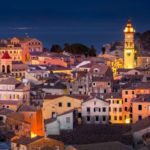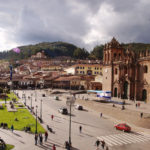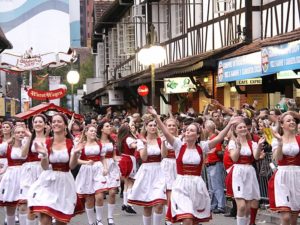Brazilian Carnival
 The carnival procession in Rio de Janeiro is undoubtedly the most ambitious, startling, spectacular and memorable show in the world that gathers millions of tourists. Nowadays, the Brazilian carnival is not really a holiday, but rather a competition of sambo schools, in which a large number of dance schools take part. The first Brazilian carnival was held back in 1723. And since then, this event has become a tradition among the locals. It should be noted that now the Brazilian carnival in Rio de Janeiro has turned from a purely religious holiday into the most powerful tool to attract tourists.
The carnival procession in Rio de Janeiro is undoubtedly the most ambitious, startling, spectacular and memorable show in the world that gathers millions of tourists. Nowadays, the Brazilian carnival is not really a holiday, but rather a competition of sambo schools, in which a large number of dance schools take part. The first Brazilian carnival was held back in 1723. And since then, this event has become a tradition among the locals. It should be noted that now the Brazilian carnival in Rio de Janeiro has turned from a purely religious holiday into the most powerful tool to attract tourists.
That is why, as it would not seem strange, tickets to the carnival are not available to most Brazilians. And this is quite understandable, tourism revenues are an important component of the Brazilian economy.
Participants of the celebration are preparing for this momentous event a year before it begins. The theme of the performances, music and choreography is carefully thought out. Participants are preparing unique colorful costumes. Everything is thought out to the smallest detail.
By tradition, the largest and most important part of the Brazilian carnival takes place seven weeks before Easter from Friday to Tuesday. At this time, everything in the city closes. Only hotels, cafes and restaurants work.
During the carnival procession in Rio de Janeiro, to the fiery sounds of samba, dancers adorned with peacock feathers pass by, as well as men playing on drums, whose faces are hidden by bright carnival masks. One of the main characters in the procession of each school is the woman who heads the car. It is from it depends largely on the assessment of the performance of the whole school. The performance of each participant lasts about 80 minutes. The total duration of the show is 10 hours. Carnival is allowed to take pictures, so you can take a camera.
Over 2 million people are watching the events of the grandiose Brazilian carnival. The last school participating in the carnival usually ends its performance by 7 o’clock in the morning. After such a rather powerful show all the next day, tourists sleep off either in hotels or on beaches. After the end of the enchanting procession, a no less vivid celebration of the victory of the winning samba school begins. The winner of the competition is declared the best until the next holiday.
In addition to the carnival in Rio de Janeiro, a huge number of beauty contests, balls, and costume contests are held. All around shines. The frantic rhythm of the city captures not only foreign visitors, but also the local residents themselves.
Brazilian carnival combines incredibly bright colors. This is a crazy holiday, filled with positivity and brilliant costumes. After all, the peculiarity of the Brazilian people is life in the rhythm of dance. Music, not pure joy, is the main part of the life of Brazilian residents.



























